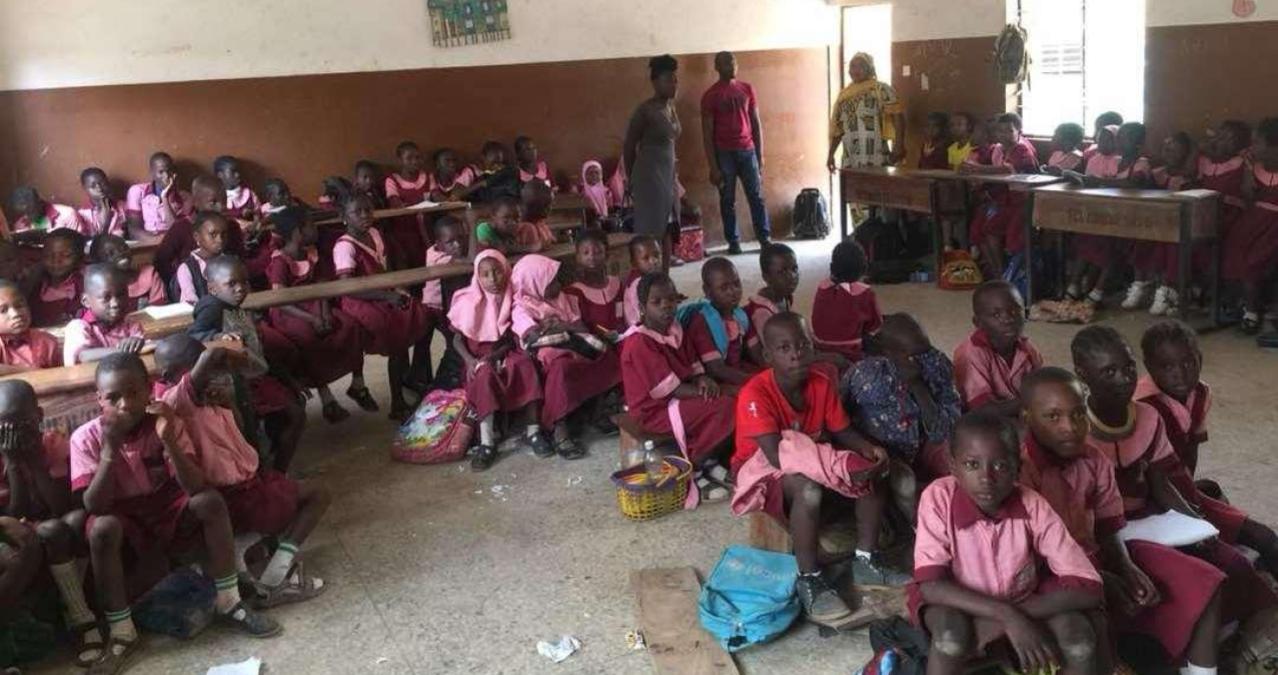Six research projects were chosen for the first “Southern Voice on the State of the Sustainable Development Goals” (SVSS) report. Today we…
Quality education is a crucial tool for improving the prospects of higher income levels for individuals, and for the economic growth of nations. Goal 4 of the United Nations Sustainable Development Goals (SDGs) is focused on ensuring inclusive and equitable quality education and promoting life-long learning opportunities for all. However, in low and middle-income countries like Nigeria, many children do not have access to quality education. This blog looks at how Nigeria can make better education a reality and achieve SDG 4.
Dilapidated structures, overcrowding and lack of adequate furniture are common features of public schools in Nigeria. LEA Primary School City Gate in Abuja is no exception. The school has 360 students, a third being Internally Displaced Persons. Classes are overcrowded and lack adequate furniture to accommodate the children. In one of the classes, 87 students share 8 tables and chairs. This forces students to take lessons sitting on the bare floor or on window stills.
LEA Primary School City Gate is only one of many examples of why Nigeria’s quality of education ranked 125th out of 137 countries on the World Economic Forum’s Global Competitiveness Index in 2016. Nigeria currently has the highest number of out-of school-children in the world of primary school age. Significant deficiencies exist even among those who attend school as they lack grade-level competencies. For instance, only 70.9 %of men and 59.3 % of women between the ages of 15 and 24 that have completed primary school in Nigeria are literate.
Barriers to Quality Education
No doubt, Nigeria experienced significant progress in expanding access to school under the Millennium development goals (MDGs) and the domestic Universal Basic Education (UBE) Scheme. However, this expansion has not resulted in improved learning. The flat learning curve in Nigeria is proof that getting children to school does not automatically translate to frequent attendance, grade progression, effective classroom governance, and more importantly, learning. Additionally, Nigeria faces challenges in ensuring equitable education and learning outcomes across gender, ethnic and regional lines.
The country’s quality of education is very unlikely to experience significant progress because of several factors that hinder improvement. Teacher absence, student nonattendance and irrelevant and culturally unresponsive curricula are some of the reasons. But also, poor pedagogical content knowledge, dilapidated structures, insecurity (specifically, the Boko Haram insurgency in the Northeast region of the country) and inadequate funding are issues that need to be addressed.
What can be done?
Quality education is necessary for the preparation of a skilled workforce and lasting socioeconomic development of a country. Hence, the development and implementation of policies aimed towards increasing the quality of education are vital. In Nigeria, there is an urgent need to focus on:
More funding: To achieve the ambitious goal on providing quality education for all by 2030, a UNESCO report suggests that countries would have to allocate at least 20 percent of national budget on education. This seems like a far reality for Nigeria with its 2018 budgetary education allocation of mere 7.04 %. There is a crucial need for the Nigerian government to prioritize the education budget for quality education and better education outcomes.
In addition, international donors and multilateral corporations need to support domestic public spending on education. A 2015 report by the Brookings Institution revealed that while aid to education increased substantially under the MDGs, it is currently declining. Going forward, education should be prioritized in global policy discussions. It needs to gain attention and pool in corresponding resources. Spending has to match education needs to translate to better education outcomes.
Technology: Technology has the dual benefit of expanding access and improving quality of education. The mobility of technology implies that learning opportunities can exist everywhere. This is particularly important as physical spaces for learning will not be able to keep up with Nigeria’s population surge, which is expected to double by 2045. Technology also facilitates access to education content, exchange of skills and experiences, as well as knowledge transfer.
In Rwanda for instance, initiatives such as Information Communications Technology for everyone (ICT4E) and ‘One Laptop per Child’ project, have enriched quality of teaching and improved the ease of transfer of knowledge to children in rural areas. The education curriculum in Nigeria has to go beyond basic computer literacy. Technology has to be incorporated in all aspects of learning, including the creation of and access to e-learning applications with audio-visual content for teachers and students.
Conclusion
Nigeria’s education system still has a long way to go to achieve SDG4 on quality education. The Nigerian Government needs to initiate and implement better education policies in order to improve the quality of learning of its citizens. Furthermore, development partners and donors need to support domestic policies and spending on education as a vital SDG. Finally, there is a need for the government to incorporate technology into all aspects of learning. If these issues are effectively addressed, Nigeria’s quality of education will improve and serve as a veritable instrument for sustainable national development.
This blog was written by Onome Oraka, Research and Communications Assistant at CSEA in Nigeria. CSEA is working on a research project on Educational Performance in Nigeria under the framework of the Southern Voice on the State of the SDGs (SVSS).
Text editor: Gabriela Keseberg Dávalos


